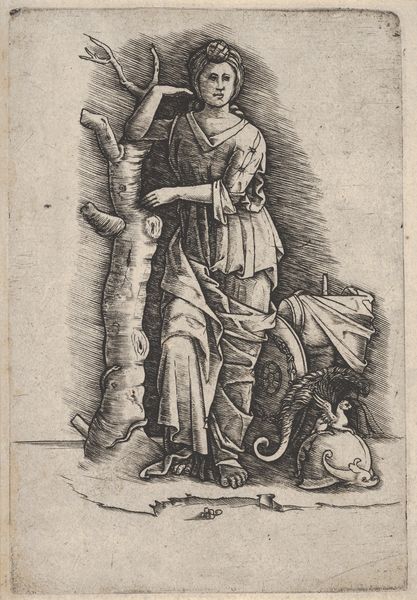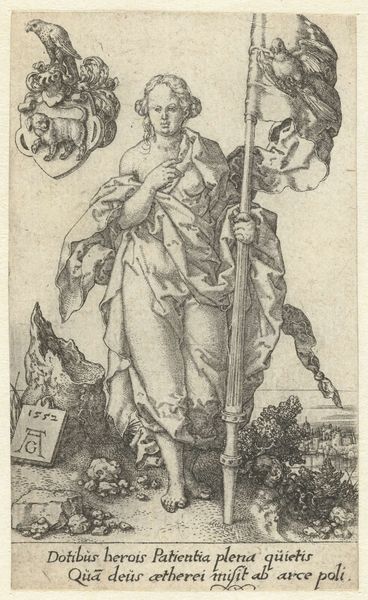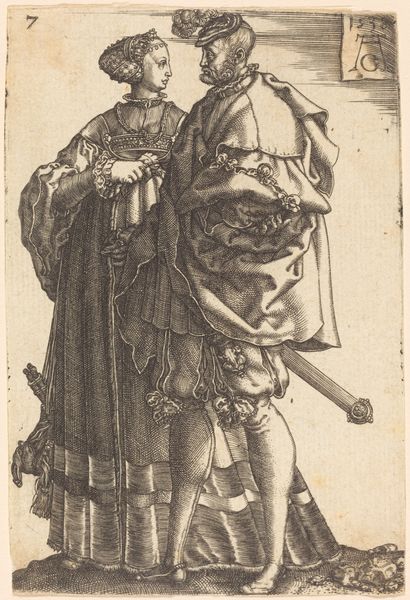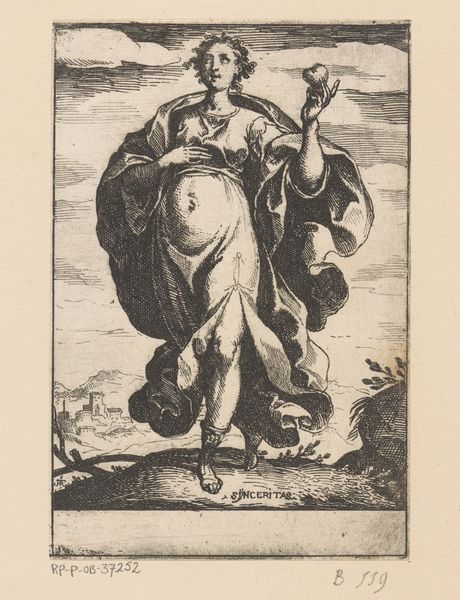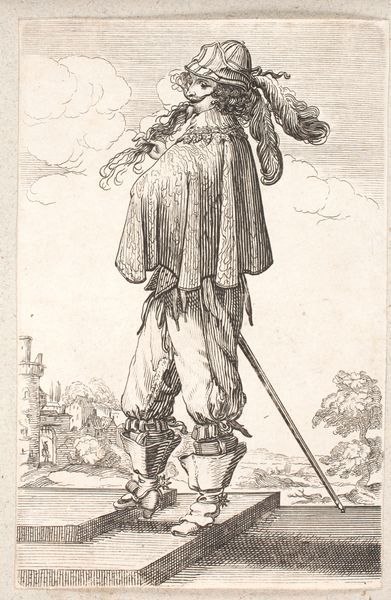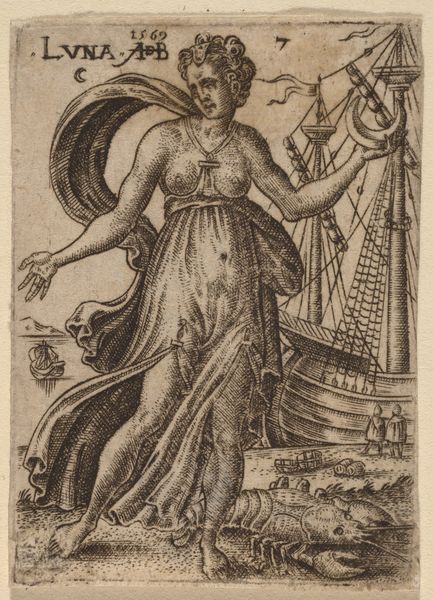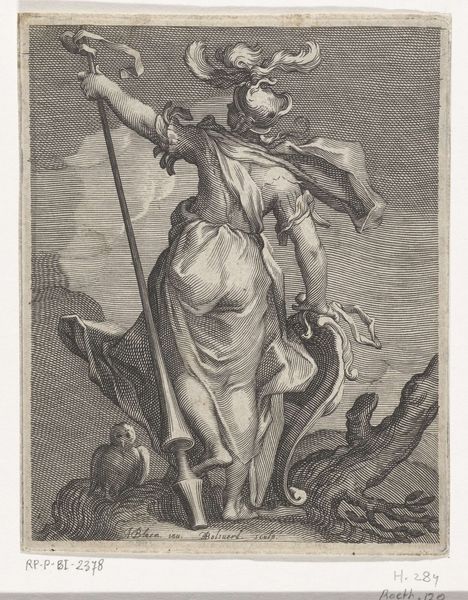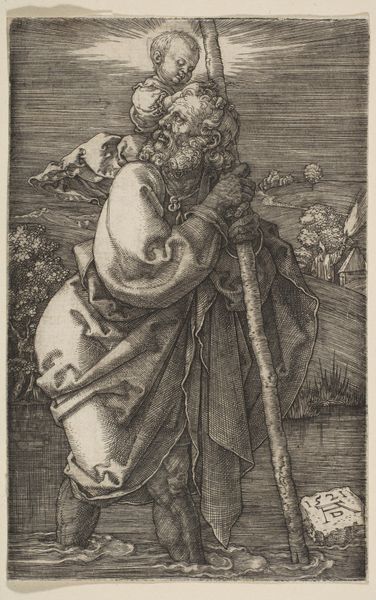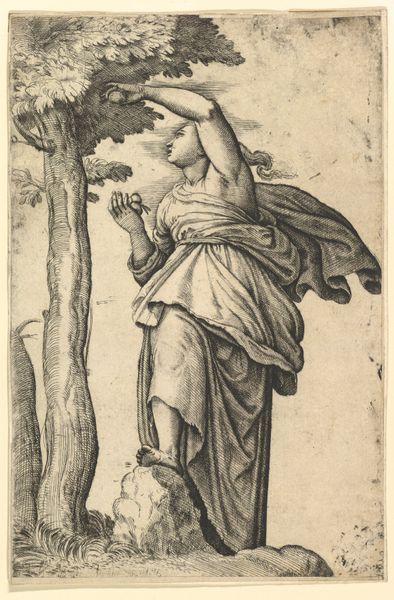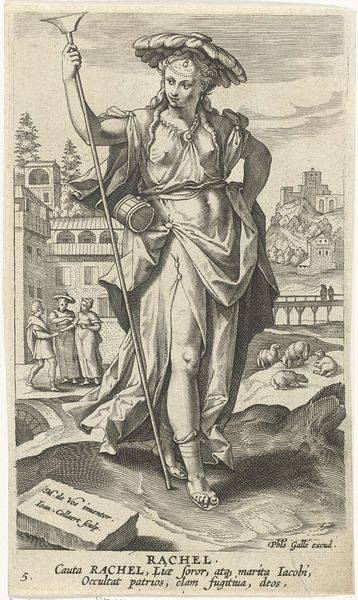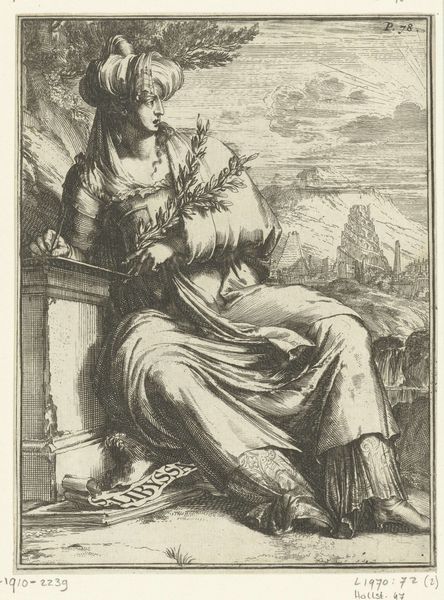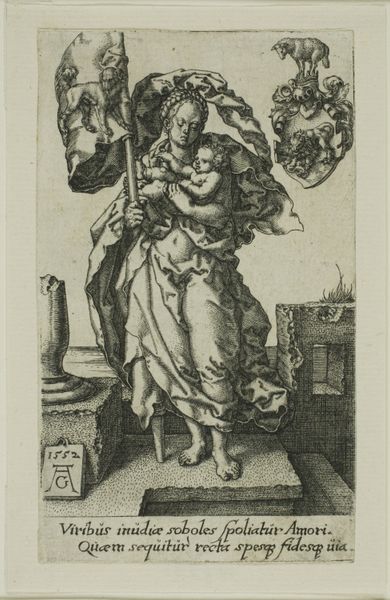
Section E: Christ Riding on a Triumphal Cart, from "The Triumph of Christ" 1836
0:00
0:00
drawing, print, engraving
#
drawing
# print
#
figuration
#
11_renaissance
#
line
#
history-painting
#
engraving
#
christ
Dimensions: Sheet: 13 ft. 11/16 in. × 10 5/8 in. (398 × 27 cm)
Copyright: Public Domain
Curator: Well, hello! Today we're gazing at a really intriguing piece from the Metropolitan Museum of Art, dating back to 1836. It's a print by Andrea Andreani titled "Section E: Christ Riding on a Triumphal Cart, from 'The Triumph of Christ'." Editor: Triumphal indeed! There’s something immediately powerful and unsettling about this image. That cart is moving with a force, dragging along figures weighted down by the implied, almost violent insistence of doctrine and power. It's a procession of authority, but at what cost? Curator: You've picked up on the emotional complexity right away. As an iconographer, what symbols jump out at you in this image? Editor: The first thing is Christ's gesture; holding what appears to be an instrument, almost a weapon of judgment. That halo feels less like celestial glow and more like another instrument brandished alongside the ecclesiastical figures who strain and kneel. I also see a clear depiction of figures that are possibly the pope or religious authorities literally pulling the cart... Curator: Precisely. Andreani printed "The Triumph of Christ" using multiple woodblocks in a chiaroscuro manner which allows the expression to deepen with highlights and the shadows, a feat, no doubt, and also part of a larger work, "The Triumph of Caesar," based on paintings by Mantegna. Editor: It’s as though the past weighs down the present, each generation pulling this ideological weight along. But you know, the cherubs feel like tiny afterthoughts, dwarfed by the imposing weight they adorn. Is that maybe symbolic? Curator: That’s astute. Perhaps Andreaeni implies some lost innocence as dogma marches forward? In general the triumphal procession as a trope certainly seems to carry a duality: an ostentatious declaration of dominance, and a shadow of conquest’s darker elements. Editor: I'd agree. One leaves with a lingering sense of the ambiguous consequences of perceived triumph. So much in art boils down to this very basic tension. It leaves a trace, doesn't it? Curator: Yes, an afterimage...like those who find themselves pulling the carts of history—are they triumphant, complicit, or merely yoked? Something to contemplate long after we leave the gallery.
Comments
No comments
Be the first to comment and join the conversation on the ultimate creative platform.
